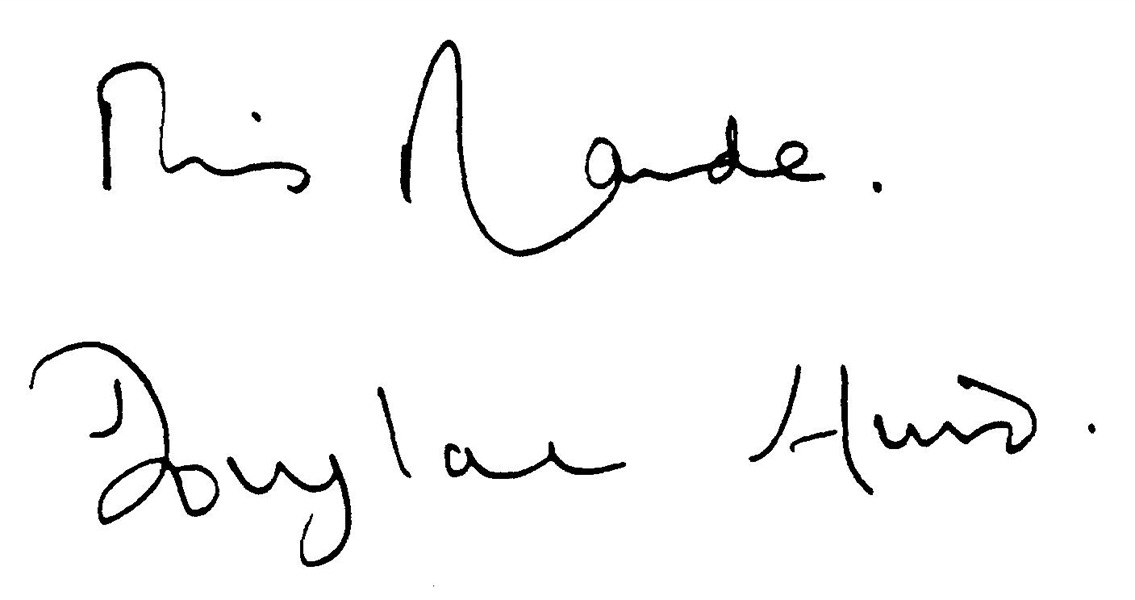<![CDATA[On the 7th February 1992 the Maastricht Treaty of European Union was signed and ratified by ministers from Belgium, Denmark, France, Greece, Germany, Great Britain, the Irish Republic, Italy, Luxembourg, the Netherlands, Portugal and Spain. The treaty was designed to create a framework for greater economic integration, shared foreign and security policies and international cooperation between authorities on issues such as crime, immigration and terrorism. The treaty laid the crucial groundwork for the European Union as it exists today. The Maastricht Treaty was the culmination of a trend towards greater European integration that had started in the aftermath of the Second World War. Many historians place the origin of integration with Winston Churchill - something which is perhaps surprising considering how controversial an issue the European Union is in British politics. In 1946, Churchill gave a speech in Zurich, Switzerland, describing what he considered the remedy for destructive conflicts in Europe. "It [the remedy] is to recreate the European Family, or as much of it as we can, and to provide it with a structure under which it can dwell in peace, in safety and in freedom. We must build a kind of United States of Europe." There were three main forces behind the drive towards integration. Firstly, the reality of the Cold War and the growing dominance of the international stage by the USSR and USA brought home to Europeans the need to collaborate to match the political, military and economic strength of the superpowers. Secondly, both of the World Wars had started on European soil, devastating vast swathes of the continent. Integration seemed the safest way to prevent future continental conflicts. Finally, there seemed to be a desire among Europeans to create a more open and free continent, one which worked together for prosperity with fewer barriers to trade and travel. In 1950, the first steps towards integration were taken with the Schuman Declaration. The French foreign minister, Robert Schuman, made a speech proposing that France and Germany, along with any other countries wishing to join them, pool their coal and steel resources. Schuman's proposal suggested that coal and steel production on the continent be placed under a single, higher authority. In 1951, the Treaty of Paris was signed, establishing the European Coal and Steel Community (ECSC) of France and Germany, as well as Italy, Belgium and Luxembourg. The ECSC marked the first collaborative union between European countries. In 1957, the same countries signed the Treaty of Rome, creating the European Economic Community and the European Atomic Energy Community. The following decades witnessed greater collaboration and integration within the European Community. The economic boom of the 1960s was helped by the abolition of customs duties on internal trade in the ECSC. The six founding nations also agreed joint control over food production, ensuring fairer distribution of food throughout the continent. In 1973, the European Community was enlarged for the first time, when Denmark, Ireland and the United Kingdom joined the six nations. The 1970s also witnessed the development of the European Community's regional policy; this transferred large sums of money to the poorest regions to create jobs and infrastructure. The early 1980s saw several other countries join the Community - Spain, Portugal and Greece. The foundations of the 'Single Market' were laid in 1986 with the signing of the European Single Act, a six-year plan aimed at removing the remaining barriers to trade on the continent. In 1989, a major shift in the geopolitical situation took place with the Fall of the Berlin Wall. Within a few years the rest of the Soviet Union would collapse, opening up new questions and challenges regarding the identity of the European continent. The Maastricht Treaty expanded on the economic integration of the previous decades by signaling the start of a movement towards political integration. The Treaty created the European Union by establishing its three pillars: the European Community which was based on the economic collaboration fostered in the previous decades; common foreign policy; and judicial collaboration in criminal matters. One of the key factors behind its creation was a desire to strengthen the existing European Community in the face of the challenges presented by the post-Cold War world. In recent years, the validity of the European Union has been bought under heavy scrutiny, many European citizens campaign for their governments to secede from the Union. In such a situation, it is useful to look back on the treaty that started the transition of the Union from a purely economic one into one with significant political and social influence. Although the EU's origins can be traced back to the formation of the ECSC in 1951, the institution as it exists today only truly came into being in 1992.]]>
The Maastricht Treaty
